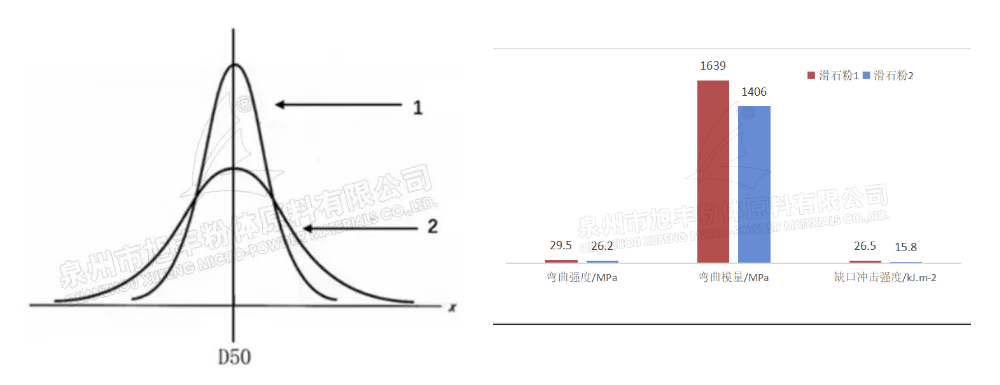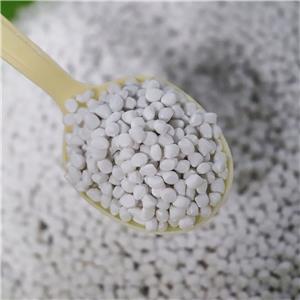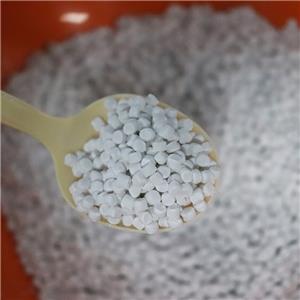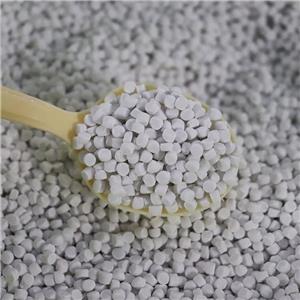Application of micronized talc in modified plastics

As a common filler, talc has a wide range of applications in the plastics industry. Its unique physical properties, such as high filler, low cost and excellent processing performance, make it an important raw material for modified plastics. In recent years, with the application of electric vehicles, the thin-walled and low-density plastic parts for vehicles have higher requirements for the rigidity of modified plastics as well as the filling amount of talc. The application of micronized talc in modified plastics is getting more and more attention.
Micronized talc
Micronization is the development trend of talc products, the finer the product, the better the enhancement effect on modified plastics, but its surface energy will also increase, easy to agglomerate, not easy to disperse, while the price is more expensive. Therefore, we need to choose the appropriate fineness according to our own technical level and actual needs, not the finer the better. The trend of the fineness (D50) of talc used for plastic reinforcement modification is as follows: 10-15µm in the 1980s; 8-10µm in the 1990s; 5-10µm in the 2000s; and 3.5-7µm at present.

Influence of different mesh sizes of talc on PP properties
Evaluation of talc fineness
Evaluation of the fineness of a talc product can not only rely on the average particle size D50 an indicator, at least need to have the average particle size D50 and the maximum particle size D98 (or D100) two indicators. The average particle size should not only meet the requirements, but more importantly, the particle size distribution should be as narrow as possible, as few as possible large particles.

Schematic diagram of the distribution of different particle sizes of the same particle size and comparison of performance
As shown in the figure, the figure for the two average particle size of the same but different particle size distribution of the product. The particle size distribution of product 1 is narrower, the maximum particle size is smaller, the product has fewer coarse particles; while the particle size distribution of product 2 is wider, the maximum particle size is larger, the product has more coarse particles. All other things being equal, the performance of product 1 modification is better than that of product 2. The size and number of coarse particles have a significant adverse effect on the mechanical properties of the product and need to be strictly controlled.
Conclusion
The product should strive to achieve the same particle size distribution in each batch, which is very difficult in production practice. In the high-end products of talcum powder, controlling the particle size distribution, especially the number of coarse particles, is a very critical technology, which requires both high-efficiency, high-precision, reliable classifying equipment, as well as a wealth of operating experience and equipment maintenance capabilities. Relying on high purity raw materials and spinning method grinding process, the ultra-fine powder better preserves the talc flake structure, which can increase the bending modulus by 10-15%, while the talc filling amount can be reduced by 5-6%.
But a disadvantage of micronized talc is the large specific surface area and small bulk density. Direct use of mixing difficulties, low yield, dust pollution. In recent years, the use of exhaust compression of new technology and granulation technology makes the apparent density of talcum powder greatly improved, such as 1250 mesh powder density before compression of 0.25-0.20g/cm3, compression can reach 0.80-0.7g/cm3, and dispersion is basically unaffected. Exhaust compression can also significantly reduce the amount of talcum powder brought into the extruder air, reduce the residence time of the material in the extruder, help to improve anti-aging properties, yield can be increased by 15-25%. Powdered talcum powder is converted into granules by pelletizing technology, which further improves the apparent density and achieves dust-free, while reducing transportation and packaging costs and facilitating storage. In the future, the processing of talcum powder is developing towards microfine, and the market needs finer talcum powder. Compression and granulation technology to reduce product transportation costs, reduce pollution, and improve the yield of downstream products is becoming more and more important.




